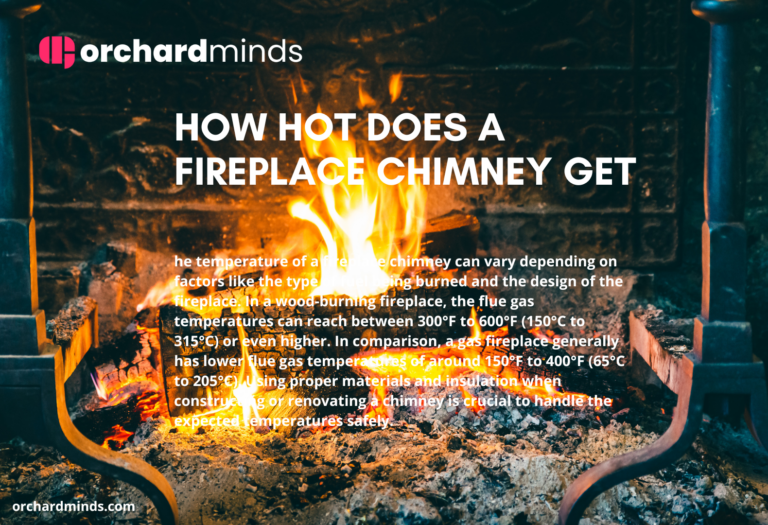While pellet stoves do need some type of venting, they do not necessarily need a traditional chimney such as with wood-burning models—the stoves or fireplace. Pellet stoves make use of what’s known as a vent pipe. Vent pipes may be routed vertically in most cases directly up through the roof or horizontally out through an exterior wall. This venting system expunges combustion gases while providing proper circulation to replace that air. What adds to the versatility and thus makes it easier to install a heating device in comparison with traditional chimneys, is the flexibility in venting options that pellet stoves have. However, pellet stoves require proper installation and maintenance if they are to work safely and efficiently.
What Is A Pellet Stoves
A pellet stove is a kind of space-firing appliance that tends to burn small, highly compressed wood or biomass pellets to generate heat in the bottom. These stoves provide a hassle-free and efficient method of heating the home. Pellet stoves operate by feeding pellets from a hopper that go into a combustion chamber, which somehow ignites the pellets through controlled airflow to combust. Equipped with a thermostat or control system, one can set a temperature, hence very user-friendly and, in essence, energy-efficient. Pellet stoves are clean and produce very little ash and emissions. Therefore, these are quite popular among most homes, and convenient, environmentally friendly ways of heating.
How Do I Install One?
Correct installation of a pellet stove will involve a bit of planning and compliance with some safety regulation. The major steps to follow when setting up a pellet stove include:
It should be placed in a location where the pellet stove can have an outlet close by, proper clearances from combustible material as intended by the manufacturer, and access to venting.
- Ventilation : Select a suitable venting system. Pellet stoves could be chimney, wall, or roof vented. Make sure that the kind of venting system in place is in accordance with the sterling limits of the local building codes and regulation.
- Prepare the Space: Clear the room of objects that easily ignite around the installation site, and the floor should be protected with a non-combustible hearth pad. Such a pad shall extend not just laterally but in a way that meets or exceeds the dimensions of the stove per required clearances.
- Install Vent Pipe: In case you have a horizontal vent, then run the vent pipe through an exterior wall sloping it properly for the build-up and flow of air. If you are venting through a chimney, inspect it for blockages—clean if need be.
- Position the stove: Put the pellet stove on top of the hearth pad and level it. Connect the vent pipe to the flue outlet on the pellet stove and seal joints tightly.
- Connect to Power: Plug the stove into an electrical power source it can support, or has adequate controls in place to handle the power the stove is going to require.
- Connect the Pellet Vent: Connect the vent pipe to your prescribed venting system and ensure it is sealed so that does not leak from the drain.
- Test the System: Before use, test the system to make sure that everything is working properly. Expect proper ignition, pellet feed, and expect the venting to exhaust properly.
- Install and Set Up the Thermostat: Use a pellet stove with a thermostat; however, mount and set up according to its specific instructions.
- Safety Checks: Install carbon
Do I Need A Chimney
Whether you need a chimney for a pellet stove installation depends on the specific venting method you choose. Pellet stoves do not require a traditional brick or masonry chimney like wood-burning stoves or fireplaces. Instead, they can be vented through a pellet vent pipe that can either go through a wall or extend vertically through the roof. The choice of venting method should comply with local building codes and manufacturer recommendations. If you opt for venting through a wall or the roof, it provides a more flexible and cost-effective solution compared to a traditional chimney, making pellet stoves a versatile heating option for many homes.
What Else Should I Know
When considering the installation and operation of a pellet stove, there are several additional factors to keep in mind:
- Fuel Storage: Pellet stoves require a constant supply of pellets. You’ll need a clean and dry storage space to keep the pellets, ensuring they remain in good condition for use.
- Maintenance: Regular cleaning and maintenance are crucial to keep your pellet stove operating efficiently. This includes cleaning the burn pot, ash pan, and the venting system. Follow the manufacturer’s maintenance guidelines.
- Safety Precautions: Always prioritize safety. Install carbon monoxide detectors and smoke alarms near the stove. Ensure proper clearances from combustible materials, and use a hearth pad to protect the floor. Regularly inspect for any signs of wear and tear.
- Quality Pellets: The quality of the pellets you use can affect the stove’s performance. Look for high-quality pellets made from hardwoods or specific biomass materials to minimize ash production and ensure efficient burning.
- Venting Maintenance: Regularly inspect and clean the venting system to prevent blockages, which can lead to poor stove performance and safety hazards.
- Local Regulations: Familiarize yourself with local building codes and regulations related to pellet stove installation. Compliance is essential to ensure a safe and legal installation.
- Energy Efficiency: Pellet stoves are generally more efficient than traditional wood-burning stoves, but their efficiency can vary by model. Look for stoves with high efficiency ratings to maximize heating while minimizing fuel consumption.
- Cost Considerations: In addition to the upfront cost of the stove and installation, factor in ongoing expenses, such as pellet fuel and potential maintenance or repair costs, when budgeting for a pellet stove.
- Noise Level: Some pellet stoves can produce a fan noise. If this is a concern, inquire about the noise level of the stove you are considering and where the stove will be placed in your home.
- Warranty and Service: Review the manufacturer’s warranty and service availability to ensure that you have support in case of any issues with your pellet stove.
Installing a pellet stove is an effective and eco-friendly way to heat your home, but proper installation and ongoing maintenance are critical for safe and efficient operation. Consulting with a professional installer and thoroughly reading the manufacturer’s instructions is essential to get the most out of your pellet stove.
How Much Do They Cost
The cost of a pellet stove can vary widely depending on factors like brand, size, features, and efficiency. On average, you can expect to pay anywhere from $1,000 to $3,000 for the stove itself. Installation costs, including venting and labor, can add another $1,000 to $2,000. Additionally, you’ll need to budget for the ongoing expense of pellet fuel, which typically costs around $200 to $300 per ton, depending on your location. It’s essential to research and compare different models and consider your specific heating needs and budget when purchasing a pellet stove.
Other Recommended Maintenance
In addition to regular cleaning and maintenance, some other recommended maintenance tasks for pellet stoves include inspecting the gaskets, seals, and electrical components for wear and tear. Lubricate moving parts as needed, such as the auger and the blower motor. It’s also essential to monitor the condition of the venting system, checking for any blockages or damage, and clean the glass window for a clear view of the flames. Following the manufacturer’s maintenance guidelines is crucial for efficient and safe operation.
When Do I Call A Professional
You should call a professional if you encounter issues beyond routine maintenance. If your pellet stove is not igniting, experiencing unusual noises, emitting excessive smoke or odors, or showing signs of poor performance, it’s best to seek assistance from a certified technician. Additionally, if you notice any problems with the electrical components or if you need to repair or replace any part of the stove, it’s advisable to contact a professional who specializes in pellet stove servicing to ensure proper diagnosis and safe repairs. Safety concerns or issues related to venting should also prompt a professional inspection.




Leave a Comment